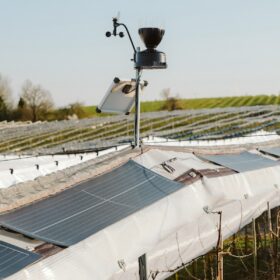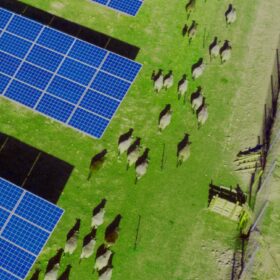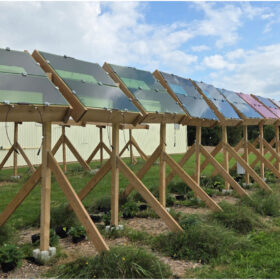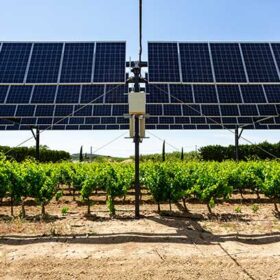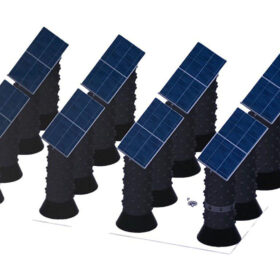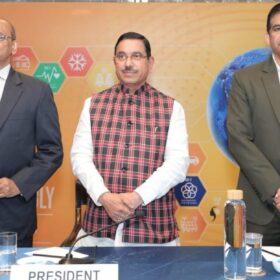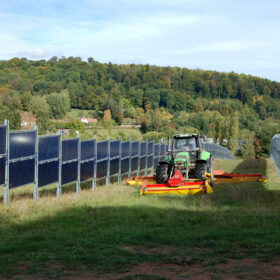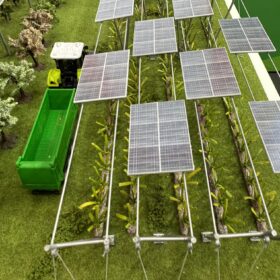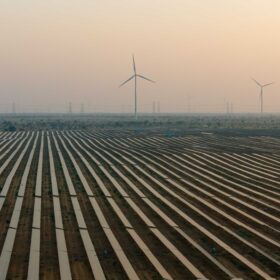Fraunhofer ISE testing agrivoltaics on standard weather protection covers
Fraunhofer ISE and German weather protection specialist VOEN Vöhringer are testing an agrivoltaic system that uses existing crop cover structures to support solar modules, eliminating the need for a dedicated mounting system.
Construction starts on New Zealand’s 280 GWh agrivoltaic project
Construction on New Zealand’s largest solar farm project has begun at Te Aroha in Waikato, marking a significant milestone for the country’s renewable energy future and the potential of agrivoltaics.
Cadmium telluride vs. crystalline silicon in agrivoltaics
Researchers in Canada have compared strawberry growth under uniform illumination from semi-transparent thin-film cadmium telluride panels and non-uniform illumination from semi-transparent crystalline silicon modules. Their analysis considered metrics such as fresh weight, height, leaf count, chlorophyll content, soil temperature and humidity.
Italy allocates 1.5 GW in agrivoltaics tender
The Italian authorities have chosen 540 projects, totaling 1.5 GW, in the nation’s first agrivoltaics tender.
Agrivoltaics can increase grape yield by up to 60%
French agrivoltaics company Sun’Agri says that two of its facilities increased grape yields by 20% to 60% in 2024, compared to areas without solar panels. The PV modules helped regulate temperature fluctuations, reducing summer heat peaks and winter temperature declines.
Colombian researchers design agrivoltaic system with hydroponic towers
Colombian researchers have designed an agrivoltaic system integrating hydroponic growing towers. The modular array, consisting of stackable 20 cm rings, creates a structure up to 2.5 meters tall, optimized for cultivating approximately 80 plants per square meter.
Leaders from 120 member countries to attend Seventh Session of International Solar Alliance Assembly in New Delhi
The Seventh Session of the International Solar Alliance (ISA) Assembly, to be held in New Delhi from Nov. 3-6, will deliberate on ISA initiatives to improve energy access, security and transition among its member countries.
Yashika Energy Systems partners Germany’s Next2Sun on vertical bifacial agri-PV systems
Yashika Energy Systems has partnered Germany’s Next2Sun and Wattkraft India to launch pilot projects, ranging from 100 kWp to 500 kWp, integrating vertical bifacial solar technology with agriculture.
Italy’s first agrivoltaic tenders draws bids for 1.7 GW
Italy’s Ministry of the Environment and Energy Security (MASE) says it has received 643 bids totaling 1.7 GW in its first agrivoltaic tender. About 56% of the proposals have come from the country’s sunny southern regions.
India to face significant land, water challenges in scaling renewables beyond 1.5 TW, says CEEW study
A new report by CEEW states that India’s unconstrained RE potential exceeds 24 TW (terawatts), but not all of it is achievable. Even reaching the 7 TW required to achieve net-zero emissions by 2070 will require a holistic approach to addressing challenges such as land access, climate risks, land conflicts, and population density.
